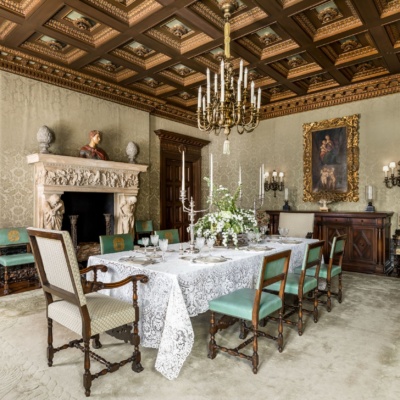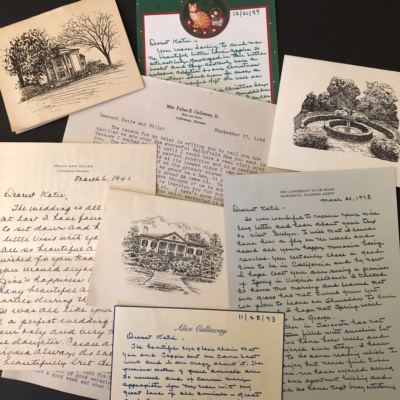For many years a wonderful English pastoral landscape painting has hung over the mantel in the living room of the Callaway home. According to notes by Alice Hand Callaway, Pastoral Landscape, while unsigned, was painted by the noted English painter Ramsey Richard Reinagle (1775-1862) in 1813.
Like many artists Reinagle was an interesting character, well known for his landscapes, animals and portrait paintings. He learned to paint from his father, Philip Reinagle, an outstanding painter in his own right. Ramsey worked with both oil and watercolor and first displayed his works at the Royal Academy at the amazing age of 13. He went on to become an associate of the academy in 1814, and a full member in 1823. Reinagle was also active in the Society of Painters in Watercolors. His landscape watercolors were particularly well known and between 1806, and 1812, he displayed sixty-seven works of mostly English and Italian Landscapes, at various Society exhibitions. Reinagle was a clever copyist of old masters, and in 1848 his life became filled with turmoil when he slightly altered a small painting by another artist and submitted it to the Royal Academy for exhibition. Because of this indiscretion Reinagle was asked to resign his membership in the Royal Academy. He tried several times to redeem himself but was ultimately unsuccessful and died impoverished in 1862.
Despite his unfortunate situation late in life, Ramsay Richard Reinagle paintings are highly admired and treasured today. Reinagle works can been seen at the Victoria and Albert Museum, the Tate Gallery and many other prominent art museums in both Great Britain and the United States.
As part of the recent second and third floor renovation, the Art Conservation Center of Atlanta carefully studied and cleaned our Reinagle. While most of the conservation techniques used to preserve the painting are not noticeable to the naked eye, one aspect of the project made a profound difference. Using ultraviolet-A radiation, Head Conservator, James Squires, determined that years ago the painting was covered with several layers of varnish to protect the finish. Over time the varnish yellowed and became soiled leaving a dull and darker looking painting. As part of the conservation treatment, James carefully removed the varnish from the painting using an aqueous cleaning agent. This cleaning made all the difference changing the sky to a wonderful blue and bringing the clouds to life. Viewers can now see the artist’s original colors and tonal contrasts. It adds so much life to the living room and is a sight to behold.



